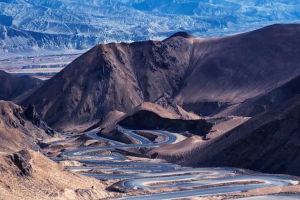Antarctica, known for its low temperature, is often associated with one thing - ice. The sea ice in the Antarctica, in particular, has always been a subject of fascination and research. In this article, we will explore the magical properties of Antarctic sea ice and delve into the mysteries surrounding it.
Antarctic sea ice is formed by the freezing of seawater in the Southern Ocean. The salinity of the surface seawater in the Southern Ocean is approximately 34, and the seawater starts to freeze at a temperature of 1.9°C.
The area covered by Antarctic sea ice varies considerably with the season, and the range of late winter sea ice is between 17 to 20 million square kilometers.
Most of the sea ice in the Antarctica is in the form of floating ice. These ice sheets were formed in other locations last year. After being broken apart, they floated to Antarctica with the movement of the ocean and wind.
Antarctic Sea Ice plays a crucial role in the global climate system. By reflecting the radiation from the sun, it prevents the exchange of heat and water vapor between the Southern Ocean and the atmosphere.
The growth of Antarctic sea ice leads to the precipitation of salt, which increases the salinity and density of the surrounding seawater, causing it to sink, forming high-salt bottom water.
Conversely, during spring and summer, the melting of Antarctic sea ice results in the discharge of a large amount of low salinity water into the ocean, affecting the seawater structure and marine circulation of the Southern Ocean.
From the formation of the sea ice to its melting, the Antarctic sea ice undergoes significant changes, marking the passage of time and the mysterious transformations that take place in Antarctica.
In recent years, the changes in Antarctic sea ice have been observed to exhibit some surprising phenomena. According to NASA reports, in February 2023, the sea ice around Antarctica reached its lowest range since satellite records began in 1979.
This has attracted widespread attention from the scientific community and the public. Some experts have raised concerns that the Antarctic sea ice has entered a stage of rapid melting, which could pose significant risks and uncertainties for global climate.
Apart from changes in sea ice, there are other worrying trends of climate change in Antarctica, such as the five-fold increase in temperature in the Antarctic Peninsula area compared to the global average. This has led to the melting of ice caps and ice shelves, causing a significant impact on the ecosystem of the region.
To better understand the impact of climate change on Antarctica, scientists are undertaking extensive research and exploration. This includes monitoring Antarctic ice caps and sea ice, studying the region's ecosystem and species, and analyzing its history and geological records.
Although the impact of climate change on Antarctica is a complex and severe issue, we can address this challenge through scientific research and global cooperation. By reducing the impact of human activities on the environment, we can leave a healthier and more sustainable planet for future generations.
Antarctic sea ice is a critical component of the global climate system, playing a vital role in the ecosystem and marine circulation of the Southern Ocean.
The changes in Antarctic sea ice are a significant indicator of the impact of climate change and require urgent attention and action from all nations to prevent further environmental damage.


